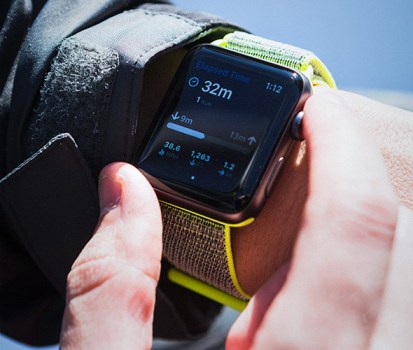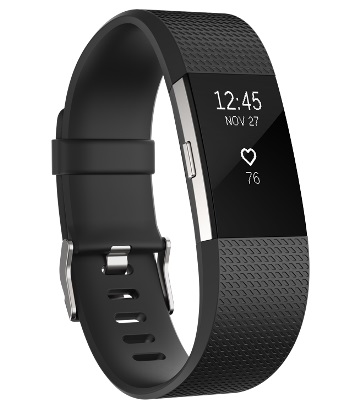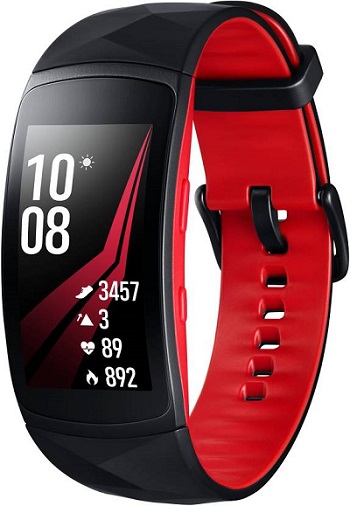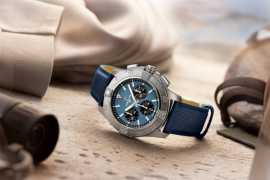The Best Waterproof Fitness Watches For Swimming in 2018
By Olga_Gafurova Monday, 18 June 2018 6:01 PM
Running and cycle tracking tech has grown incredibly over the past five years with GPS watches, form-fixing sensors and power meters expanding the universe of performance insights for us try-hard weekend warriors.
Even amateur soccer is now catered for with GPS monitors now available for casual players.
For swimmers, though, it’s been a different story. It’s taken a while for people who like a bit of pool time to feel as much love as their land-loving fellow fitness types.
But this is changing fast as brands such as Fitbit, Apple and Samsung race to upgrade their sports watches and fitness trackers with waterproof skills.
While there still aren’t many dedicated swim trackers, the best all-round fitness trackers now offer automatic stroke detection, accurate lap and distance tracking in the pool and open water, and some even offer fairly accurate heart rate monitoring in the water.
But prices range from well under $100 / £100 to over $500 / $500, so we’ve tested the leading products on the market to find the best swimming watch for every budget.
1. Apple Watch 3
Caters nicely for casual lappers
Weight: 26.7 - 52.8g | Battery life: Up to 18 hours | Waterproof rating: 5ATM

With each generation, the Apple Watch becomes a more serious fitness device. Along with its updated running and heart rate skills, the combined new Apple Watch 3 and watchOS 4 now has much improved swimming smarts.
That said, it’s still better suited to people who like to go bobbing (see what we did there) along for general fitness rather than serious swimmers.
Apple’s latest swim-carnation offers a range of features for pool and open water swimming (using the Watch’s built-in GPS). That includes auto stroke detection, automatic sets and detailed splits that you can filter for 25m, 50m and 100m all in the Workout app.
The lap and distance accuracy is solid and we loved that you could calibrate the pool length on your watch, and even down to 1m. That’s a level of fine-tuning that many dedicated swim trackers don’t offer.
While Apple’s auto stroke detection isn’t always 100%, in most cases it happily detected when we were doing front crawl, back or breast stroke and at the end of each swim you get a breakdown of your sets and strokes.
Sadly for all those hardcore swimmers, the basic swimming tracking in the Workout app offers very little beyond how many lengths you've completed in the pool. For example, there’s no option to pre-load workouts.
However, you do get the option of using third-party swimming apps such as Let’s Go Swim and Swim.com that offer a wider range of features and there’s something here for the curious triathlete too.
WatchOS 4 lets you easily transition between different workout segments e.g. run, bike, swim without starting a new workout.
The Apple Watch will detect heart rate in the pool, though this isn’t something Apple is pushing as the accuracy of optical sensors is obviously affected by the water. However, in our tests we got readings that appeared fairly close to the numbers we’d expect.
2. Moov Now
Weight: 6g | Battery life: 200 sessions | Waterproof rating: 3ATM
Best option for swim-fitness on a budget

Like many of the other devices on this list, the Moov Now does much more than just keep tabs on your pool workouts. As such, we’d describe this as a capable all-round fitness tracker with skills that carry into the water - justifying it as our top fitness tracker of 2017.
The small, super lightweight tracker fits into a comfortable soft, silicone strap that you wear on your wrist and uses on-board sensors to tracks laps, distance, time, speed, swimming style and stroke count.
We really loved that Moov broke our session data down to individual lengths where you can see how many strokes you pulled, how long it took, your turn times, any breaks or pauses you made, and what stroke you were swimming.
With attention to detail like this, the Moov Now comes close to being one of the most capable products on the list; however there are some significant drawbacks.
Firstly, you have to start your session from your phone. In most cases this means doing it in changing rooms where you can leave your smartphone safe and dry back in your locker.
A bit annoying and made worse by the lack of screen on the Now itself, which means you can’t see what’s going on while you’re swimming.
We were often left wondering if it was actually tracking at all. It also struggled a little with accuracy, dropping laps and miscounting strokes per length.
But then look at the price tag, for £50 / $60 / AU$79 and with a battery life that lets you log more than 200 workouts, you get a lot of bang for your buck and if you’re an occasional swimmer as part of a wider fitness regime then this is hard to beat.
3. Garmin Forerunner 935
The most powerful multisport watch yet
Weight: 49g | Battery life: Up to 24 hours in GPS mode | Waterproof rating: 5ATM
While some of the other devices on this list cater for general fitness, the Garmin Forerunner 935 is as serious as multi-sport devices come.
A bit like combining the features of a Fenix 5 with the looks of a Forerunner 635, this triathlon watch combines dedicated pool smarts with overall training and performance features that make it the top choice for competitive amateur swim-bike-run athletes.
The watch comes with built-in activity profiles for pool and open water swimming, and you can also create your own workouts, or download sessions via Garmin Connect - plus check out your SWOLF score - AKA your swim efficiency.
You get your SWOLF score by adding together your strokes per length, and the time it took to complete the length. e.g. 25m length at 30 seconds in 20 strokes is a SWOLF score of 50.
The lower your SWOLF the more efficient you are. Why is this important? Well for a start it lets you compare your performance for swims in different size pools more easily.
In the water, the Forerunner 935 automatically detects stroke type as well as lengths, distance, pace and stroke count. There are also time and distance alerts, a handy countdown start, advanced rest timers and open-water swim metrics.
One thing we really loved, mainly because the other trackers failed to offer it, was the option to input drills manually. This means you can also log all the hard work you do that’s not based on stroke alone, for example kick and single-arm drills. However, we did find it missed tracking the odd length here and there.
Once your sessions are done, the new Training Status feature helps you spot if you’re undertraining or overdoing it by evaluating your recent exercise history and performance indicators, making this fantastic for monitoring training, performance and recovery.
There’s no heart rate from the wrist in the water but you can pair the Forerunner 935 with a HRM-Tri or HRM-Swim heart rate monitor for added insights.
You can also sync data wirelessly via your smartphone to Garmin Connect and then into the Speedo On web platform for added Strava-like competition, community, training tips and advice.
4. Samsung Gear Fit 2 Pro
Swimproof fitness tracker for those with a need for Speedo
Weight: 34g | Battery life: 3-4 days typical usage | Waterproof rating: 5ATM

When we tested the Samsung Gear Fit 2 Pro as an all-round fitness tracker, it didn’t quite float our boat.
But thanks to a partnership with Speedo On which means the swimming brand’s app comes pre-installed, the waterproof upgrade to the popular Gear Fit 2 fares better in the pool than on dry land.
The Fit 2 Pro is impressively light and there are two strap sizes that make it comfortable for the tiny and massive-wristed alike.
The bright and colourful screen is undoubtedly a stand out feature on the Gear Fit 2 Pro and we found it really easy to see our swim data during pool sessions.
There’s also a Water Lock feature that turns off the touchscreen functionality when you’re swimming, a bit like the Apple Watch but without the bit where you get to make your watch spit the water out.
In the pool, Samsung’s own swim app will track some basic stats but what really lifts this is the Speedo On app.
It measures stroke type, lap time, SWOLF and pace before firing all of that data into Speedo’s own platform for more detailed analysis, additional competition and community features that add an extra edge to your training.
There’s 4GB of internal storage and offline Spotify, though because Bluetooth doesn’t work underwater, 'streaming' music while swimming sadly isn’t an option.
5. TomTom Spark 3
Strong swim tracker that lacks a few triathlon-tricks
Weight: 50g | Battery life: 11 hours in GPS mode | Waterproof rating: 5ATM
Slightly older than some of the trackers on this list, and with a name that’s incredibly long, the TomTom Spark 3 Cardio + Music is another multi-sport watch designed for people who mix up their fitness activities.
In the pool, once you’ve set the length distance, the Spark 3 tallies lengths, strokes, strokes per minute, total distance and calories. Sadly, there’s no automatic stroke detection.
One thing it does offer that some other trackers on this list don’t is SWOLF - and especially not at this price.
We also like the fact that the Spark 3 let us set session targets and get an easy at-a-glance view of how close we are to achieving those targets.
The form factor, with the small joystick control, also made it much easier than touchscreen devices to control once we were all wet.
One big oversight that might put off serious triathletes is the lack of a tri mode to let you do combined multi-sport sessions.
With this you have to start each sport as a new session, an odd exclusion for a device that caters well for swim-bike-run in many other ways.
6. Fitbit Ionic
General fitness tracker for those who take to the pool
Weight: 30g | Battery life: Up to 10 hours in GPS mode | Waterproof rating: 5ATM
If you only use swimming as part of a general fitness regime, knocking out a few lengths each visit, then the Fitbit Ionic's simple, easy-to-use interface and length, distance and pace tracking should prove more than sufficient for your tracking needs.
The fact that the app shows your swim in terms of your overall daily fitness goals is also a nice touch.
If, however, you’re a competitive swimmer or take your pool time seriously then you’ll find Fitbit’s first smartwatch somewhat on the basic side.
Like many of the all-round fitness trackers there’s no way to input drills – so a length of kick won’t register, for example – and because there’s no automatic stroke detection, changing stroke in the middle of a length can lead to data registering incorrectly.
The watch is easy to wear in the water and the sheer number of spacing holes on the strap mean it stays put even on smaller wrists.
The swim tracking function is self-explanatory; pick 'exercise' from the apps, swipe to swim (yes, swiping worked surprisingly well in the water) and go.
There’s a settings button where you can easily input the length of the pool for tracking, and the fact that the screen stays off unless you’ve set a cue – showing you distance, laps and time every 100m for example – is beneficial, as a flashing screen entering your eye line when you’re doing your best Phelps impression can prove distracting.
You can also set the tracker to automatically recognize different exercises, including swimming, so if you do forget to press go you’re sorted.
The tracking itself, however, is where the Ionic swam into trouble. Despite inputting the pool length as 25m, we got readings of 8 lengths as 100m and 22 lengths as 450m instead of 550m.
Fitbit say that some inaccuracies may come from shorter swims, stopping to rest in the middle of the pool and stopping for more than 60 seconds at the end of a length (which we probably did when trying to work out why the 100m cue we’d set didn’t go off after four lengths).
For these reasons, they recommend you should be able to swim between 6-12 lengths without stopping to track your swims – so it’s probably not suitable for those just starting out.




























Add new comment